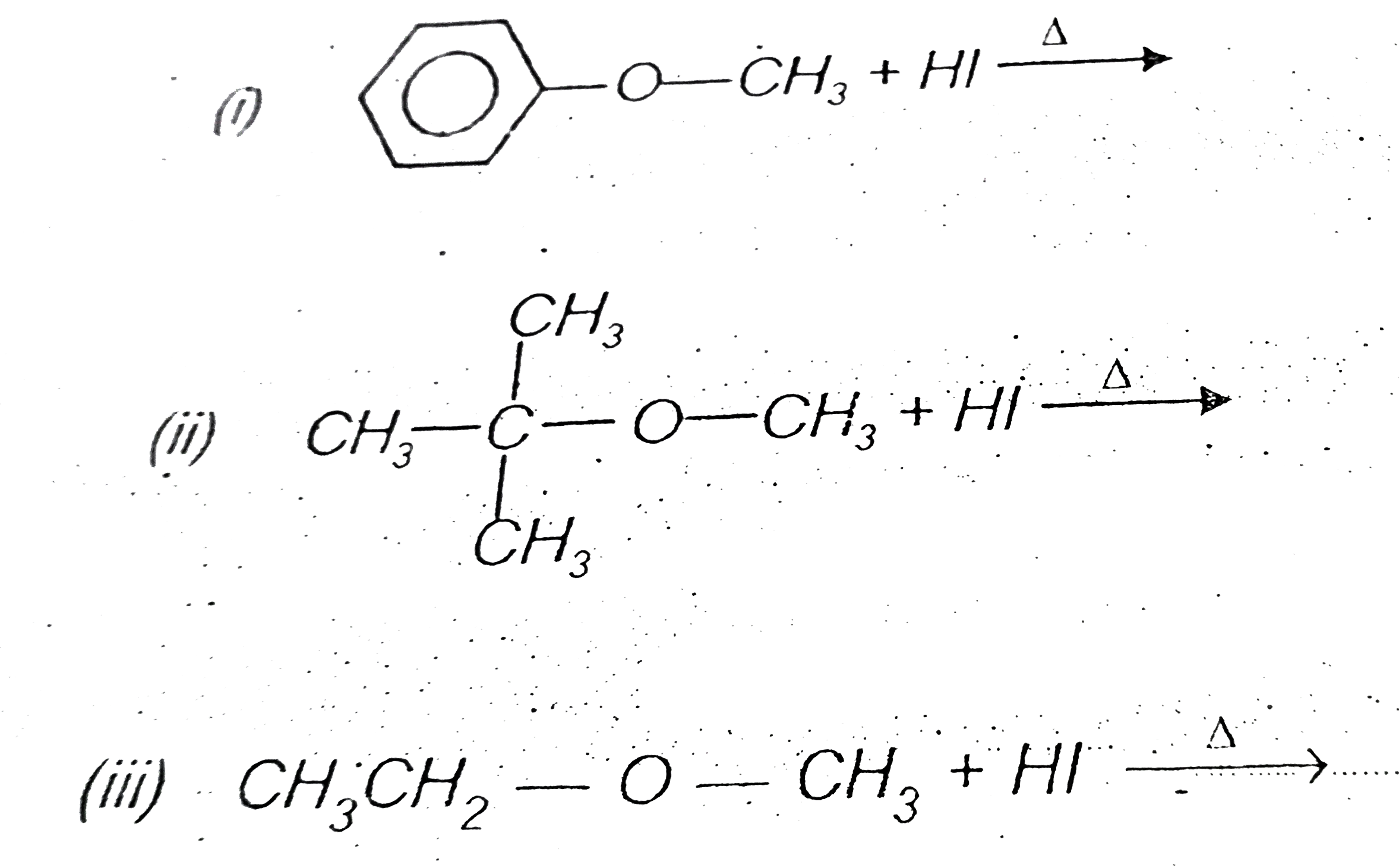Order of reactivity of hydrogen halides towards ethers is
HCl>HBr>HI
HI>HBr>HCl
HBr>HI>HCl
HBr>HCl>HI
The correct Answer is:B
To determine the order of reactivity of hydrogen halides (HX) towards ethers (ROR), we need to analyze how these hydrogen halides interact with ethers and the factors that influence their reactivity.
1. Identify the Ether Structure:
- Ethers have the general structure ROR, where R represents an alkyl group.
2. Reaction with Hydrogen Halides:
- When an ether reacts with a hydrogen halide (HX), the ether bond (C-O) breaks. This leads to the formation of an alkyl halide (R-X) and an alcohol (R-OH).
- The reaction can be represented as:
ROR+HX→R−X+R−OH
3. Consider the Halides:
- The hydrogen halides we are considering are HCl, HBr, and HI.
4. Analyze the Bond Strength and Size:
- The reactivity of hydrogen halides towards ethers is influenced by the strength of the H-X bond and the size of the halide ion (X).
- As you move down the group in the periodic table from chlorine to iodine, the size of the halide ion increases (Cl < Br < I).
5. Reactivity Trend:
- Larger halide ions (like I-) are better at stabilizing the transition state during the reaction, which makes the bond cleavage easier and faster.
- Therefore, HI will react more readily with ethers than HBr, and HBr will react more readily than HCl.
6. Establish the Order of Reactivity:
- Based on the above analysis, the order of reactivity of hydrogen halides towards ethers is:
HI>HBr>HCl
Final Answer:
The order of reactivity of hydrogen halides towards ethers is:
HI>HBr>HCl
- Ethers have the general structure ROR, where R represents an alkyl group.
- When an ether reacts with a hydrogen halide (HX), the ether bond (C-O) breaks. This leads to the formation of an alkyl halide (R-X) and an alcohol (R-OH).
- The reaction can be represented as:
ROR+HX→R−X+R−OH
- The hydrogen halides we are considering are HCl, HBr, and HI.
- The reactivity of hydrogen halides towards ethers is influenced by the strength of the H-X bond and the size of the halide ion (X).
- As you move down the group in the periodic table from chlorine to iodine, the size of the halide ion increases (Cl < Br < I).
- Larger halide ions (like I-) are better at stabilizing the transition state during the reaction, which makes the bond cleavage easier and faster.
- Therefore, HI will react more readily with ethers than HBr, and HBr will react more readily than HCl.
- Based on the above analysis, the order of reactivity of hydrogen halides towards ethers is:
HI>HBr>HCl
The order of reactivity of hydrogen halides towards ethers is:
HI>HBr>HCl
Topper's Solved these Questions
Similar Questions
Knowledge Check
The order of reactivity of halogens towards hydrogen is
AF2<Cl2<Br2<I2BI2<Br2<Cl2<F2CCl2<Br2<I2<F2DBr2<Cl2<F2<I2The order of reactivity of various alkyl halides towards nucleophilic substitution follows the order
AR-IgtR-BrgtR-ClgtR-FBR-FgtR-ClgtR-BrgtR-ICR-ClgtR-BrgtR-IgtR-FDR-BrgtR-IgtR-ClgtR-FAssertion: The order of reactivity of alkyl halides towards SN1 reaction in tertiary halidegtsecondary halidegtprimary halide.
Reason: The reaction follows carbocation mechanism.AIf both assertion and reason are true and reason Is the correct explanation of assertion.BIf both assertion and reason are true but reason is not the correct explanation of assertion.CIf assetion is true but reason is false.DIf both assertion and reason are false.
The order of reactivity of halides towards SN 1 mechanism is
View Solutiona : What is the reactivity order if given halogen acids towards ethers ?
HCI,HBr,HI
b : What will be final products ?

View SolutionThe correct order of reactivity of the following bromides towards SN1 reaction is

View SolutionWhat is the order of reactivity of hydrogen atoms attached to carbon atom in an alkene?
View SolutionOrder of reactivity of alcohols towards sodium metal is
View Solution
